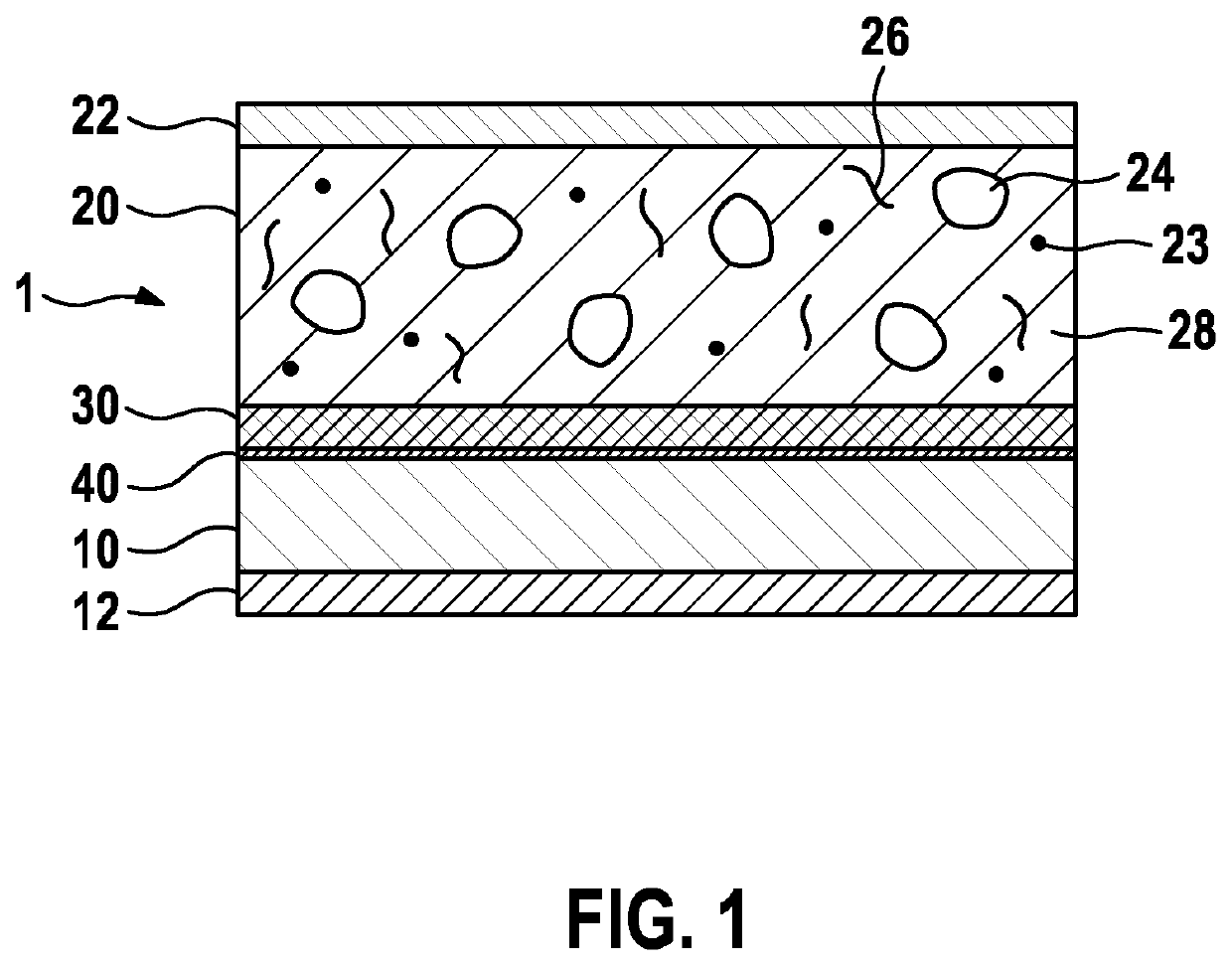Lithium solid-state battery, and method for manufacturing a lithium solid-state battery
- Summary
- Abstract
- Description
- Claims
- Application Information
AI Technical Summary
Benefits of technology
Problems solved by technology
Method used
Image
Examples
Embodiment Construction
[0024]FIG. 1 shows a cross-sectional view of a lithium solid-state battery according to one specific embodiment of the present invention.
[0025]Rechargeable lithium solid-state battery 1 (secondary battery) includes a lithium anode 10 and a cathode 20.
[0026]Lithium anode 10 may include a tape made of pure lithium, lithium on a metal substrate (such as copper, nickel, or a combination thereof), or a lithium alloy (LiMg, for example).
[0027]Cathode 20 may include a sulfidic or sulfur-based solid-state electrolyte 28 and an active cathode material 24 that is situated in solid-state electrolyte 28. Active cathode material 24 may be embedded in the form of grains (polycrystalline or monocrystalline) in a binder 23 of cathode 20. Active cathode material 24 may include an (outer) coating for reducing the resistance at the transition from active cathode material 24 to binder 23. The coating may include or be LiNbO3, for example. However, it is also possible for active cathode material 24 to i...
PUM
 Login to View More
Login to View More Abstract
Description
Claims
Application Information
 Login to View More
Login to View More - R&D
- Intellectual Property
- Life Sciences
- Materials
- Tech Scout
- Unparalleled Data Quality
- Higher Quality Content
- 60% Fewer Hallucinations
Browse by: Latest US Patents, China's latest patents, Technical Efficacy Thesaurus, Application Domain, Technology Topic, Popular Technical Reports.
© 2025 PatSnap. All rights reserved.Legal|Privacy policy|Modern Slavery Act Transparency Statement|Sitemap|About US| Contact US: help@patsnap.com

